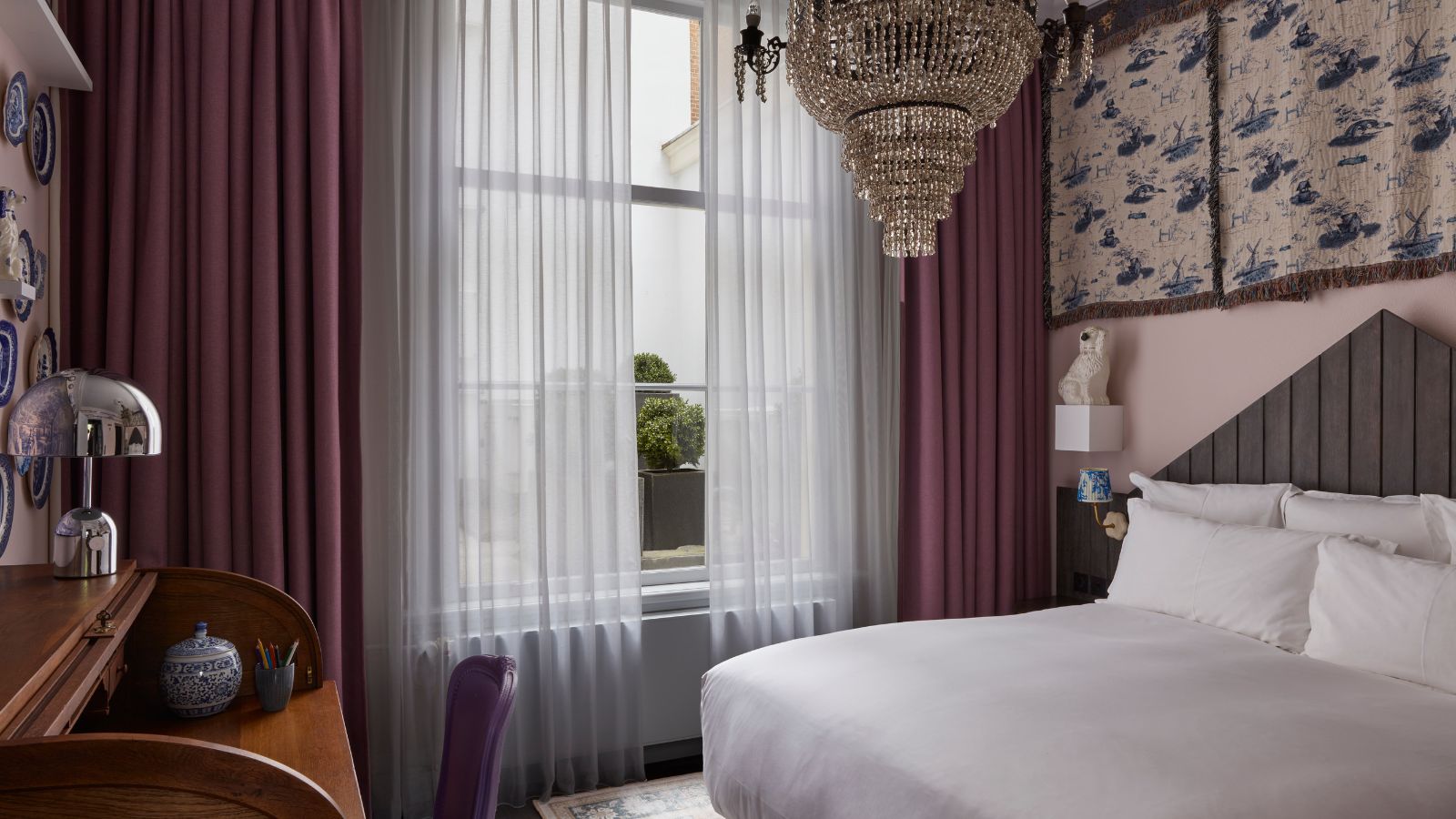
Of all of the spaces that inspire us, hotels are at the top of the list. The best ones don't just look beautiful but leave you feeling rested, re-energized, or with a spark of an idea that you'd love to recreate back home.
But what is it about hotel design that interior designers seem to get so right? As someone who has always loved staying at different hotels – far-flung or down the road – to gather inspiration for my home, I decided to go straight to the experts to garner their secrets.
From perfecting an at-home turn-down service to simple lighting tricks and design trends to follow, these are the top design secrets that interior designers use to create that hotel magic. Plus, how to translate that into tips for elevating your own home.
7 design secrets from hotel designers
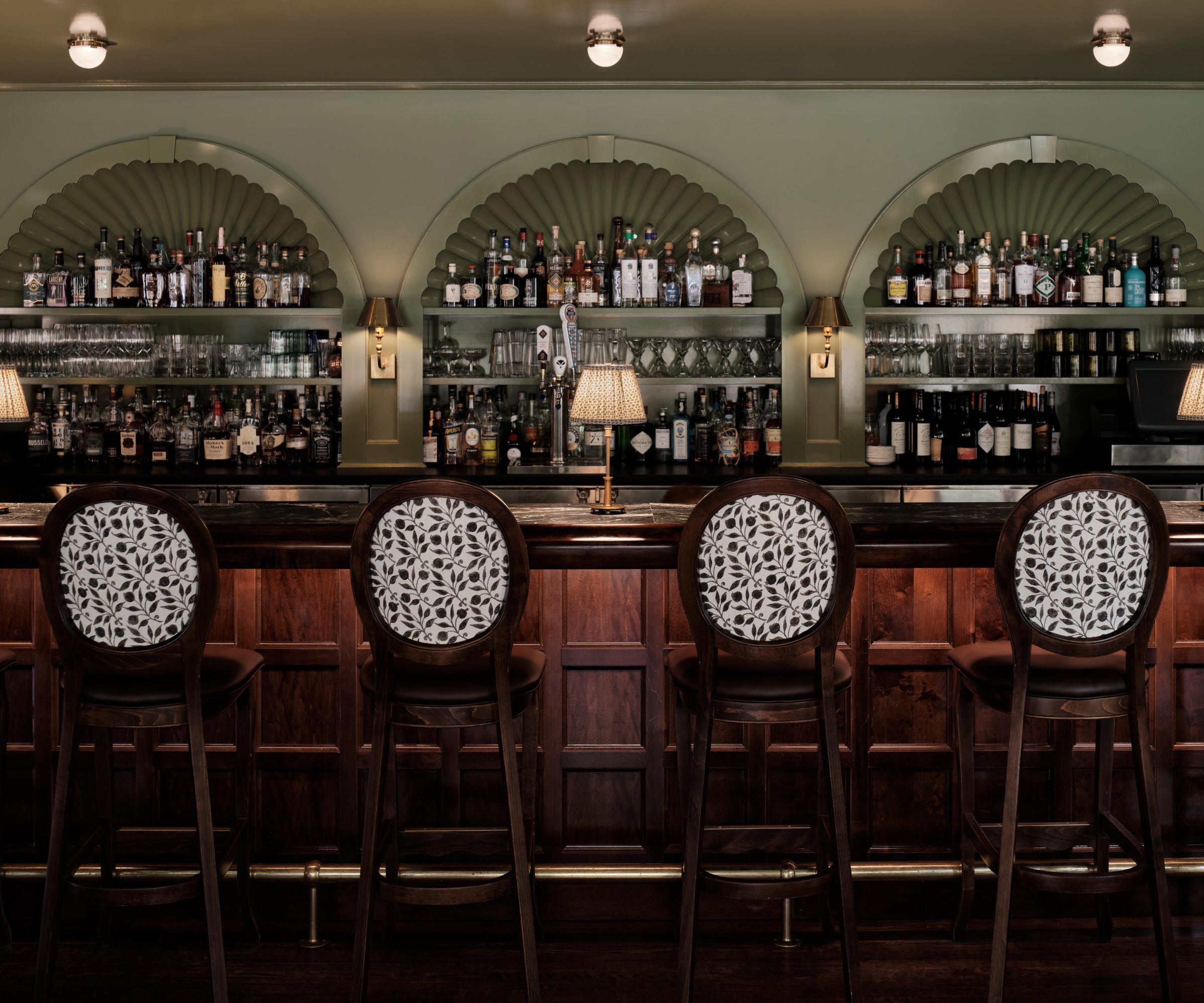
Ever wondered why hotels feel so inviting? Well, it's not all down to aesthetics. It's about storytelling – every detail has been carefully considered to create a moment or an experience for the guests. Thinking about function, flow, appealing to all five senses, and of course, really great design.
A luxury hotel wows upon entry, but I have always struggled to get the same reaction in my own home – whether from myself or guests. So, in order to help me unpack the secrets behind some of the world's most stylish hotels, I spoke to the designers who created them. Here are the secrets they were happy to divulge.
1. Live in the space first
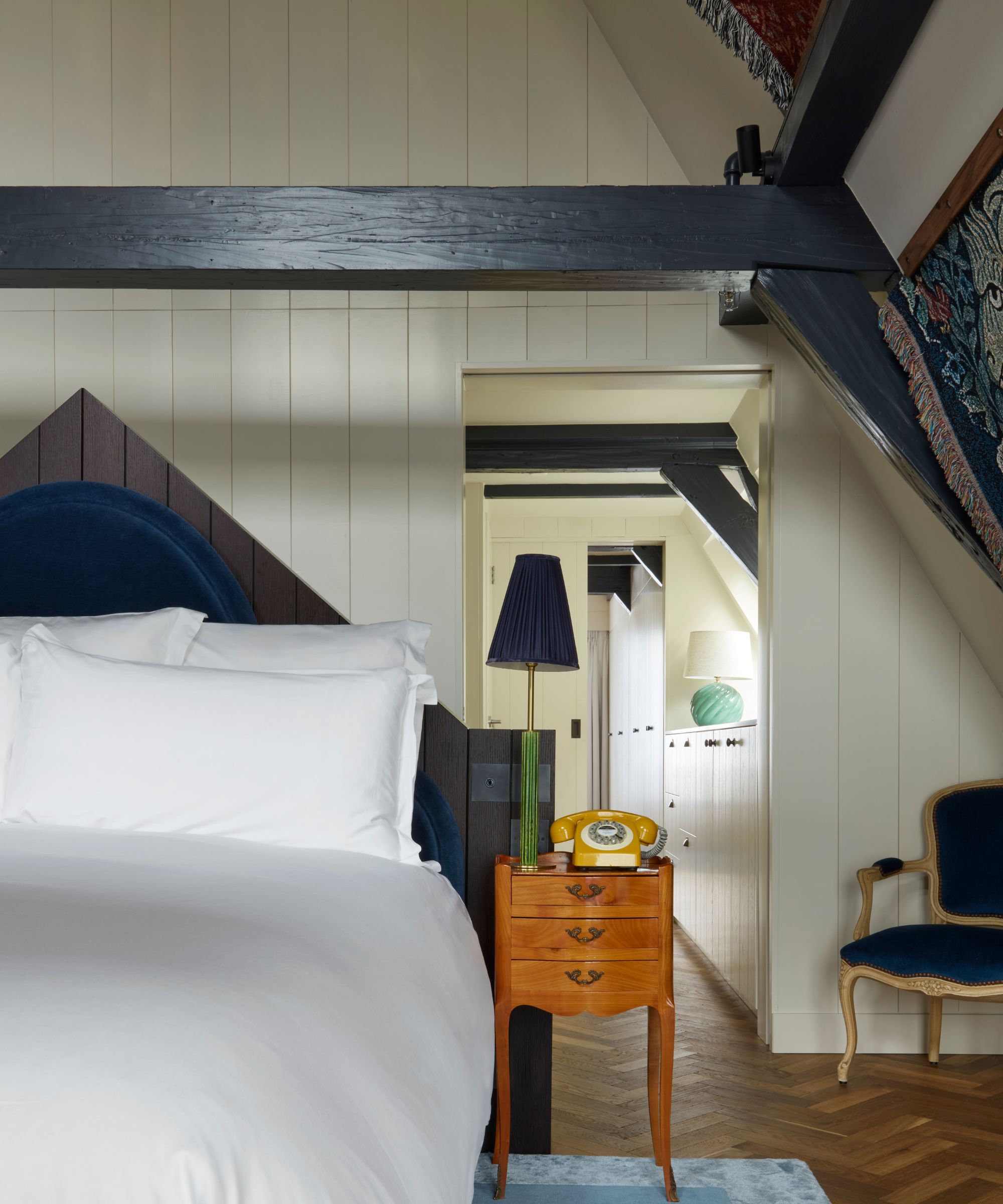
Good design starts with careful observation. Before designers set about creating a scheme, they analyze everything from natural light to functional needs like sockets and switches, based on how people move through the room throughout the day.
Jacu Strauss, creative director of Lore Group, designs wow-factor hotel spaces including most recently the Pulitzer Amsterdam.
'To truly understand a space, you have to experience it,' he adds. 'That’s why I spent a night in nearly all of the 225 rooms before making any design decisions. I needed to feel their quirks, their charm, their imperfections – because great design isn’t just about how a space looks, but how it makes you feel. Some rooms had incredible natural light, others had hidden corners. Each one needed something different, and that informed my approach.'
One of the biggest decorating mistakes people make when designing their homes is rushing into decisions before they’ve had time to understand how they actually use the space. Hotels, on the other hand, are meticulously planned to anticipate guests’ needs, from the flow of the room to the layout.
2. Turn down the lights
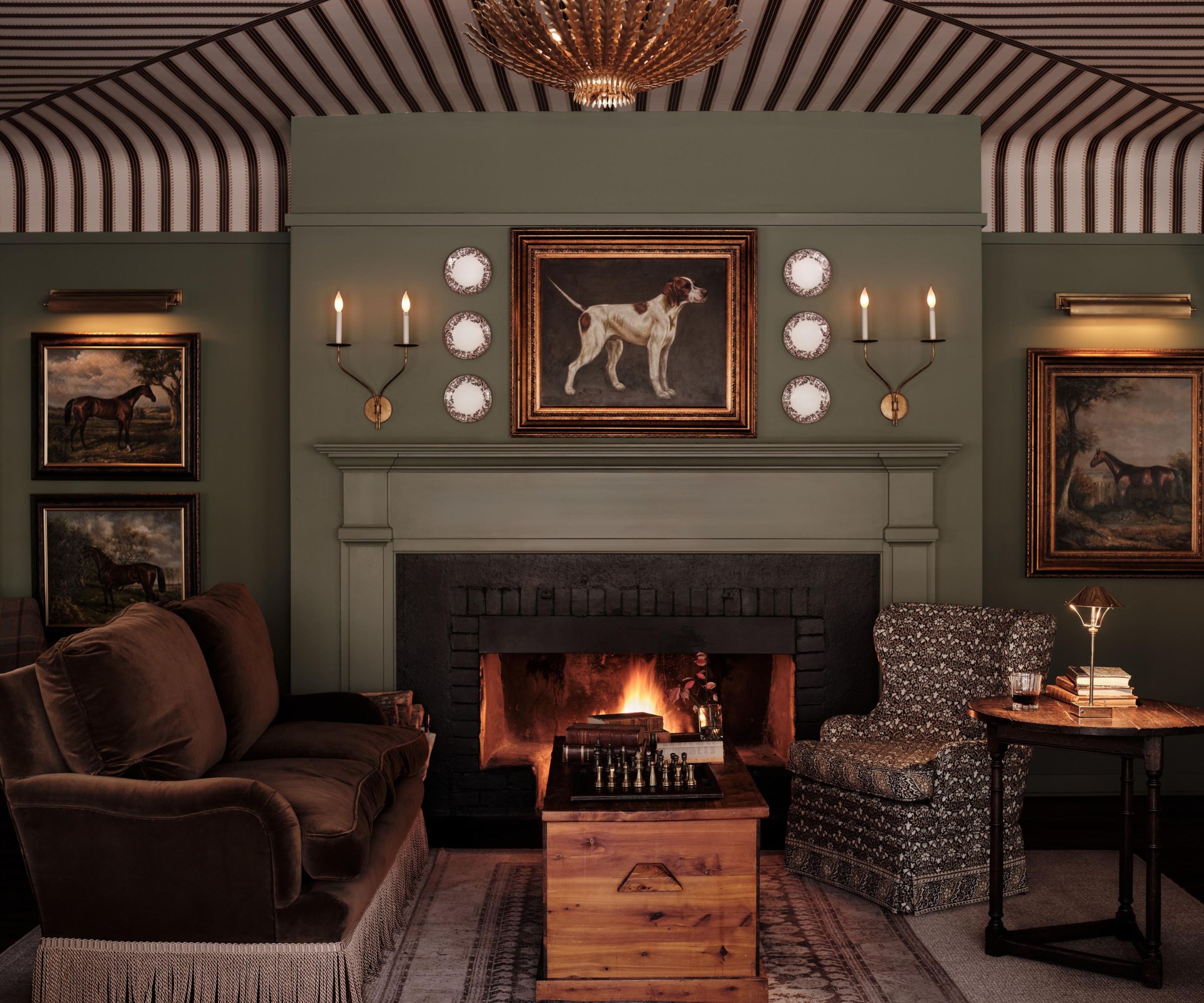
Hotels are designed to make guests feel instantly relaxed, and lighting plays a huge role in that. Walk into any luxury hotel, and you notice that you'll never be greeted by harsh overhead lighting. Instead, the ambiance is carefully curated through layered lighting ideas that create warmth, depth, and an inviting glow.
Stephanie Sabbe, founder of Sabbe Interior Design, who designed the cozy cabin-style hotel bar and lounge area seen above, says: 'Hotels should feel like the home you've always wished you lived in.'
'Lighting should be dim, with no can lights, and everyone at all times – in every reflective surface – should look like the best versions of themselves.' Stephanie advises. 'You're not performing an operation. You're eating, maybe drinking, and definitely sleeping.'
To achieve this, work with a layered mix of soft overhead lighting, wall sconces, table lamps (both wired and portable), and even fire light to create a softly lit ambiance.
No wires no problem, this vintage style wall sconce can be plugged in and ready to go in an instant. Casting a soft glow at your bedside, its woven tapered shade and deep wood tones add texture and warmth.
Standing tall and super pretty, this brass buffet lamp from Anthropologie comes with a clip shade that you can choose from four cottage-style prints. Perfect for your nightstand or vanity.
For a soft alternative to the 'big light,' this woven fabric shade diffuses the light for a subtle glow overhead. It has a real contemporary shape with an organic feel thanks to the artisanal details.
3. Include something unexpected
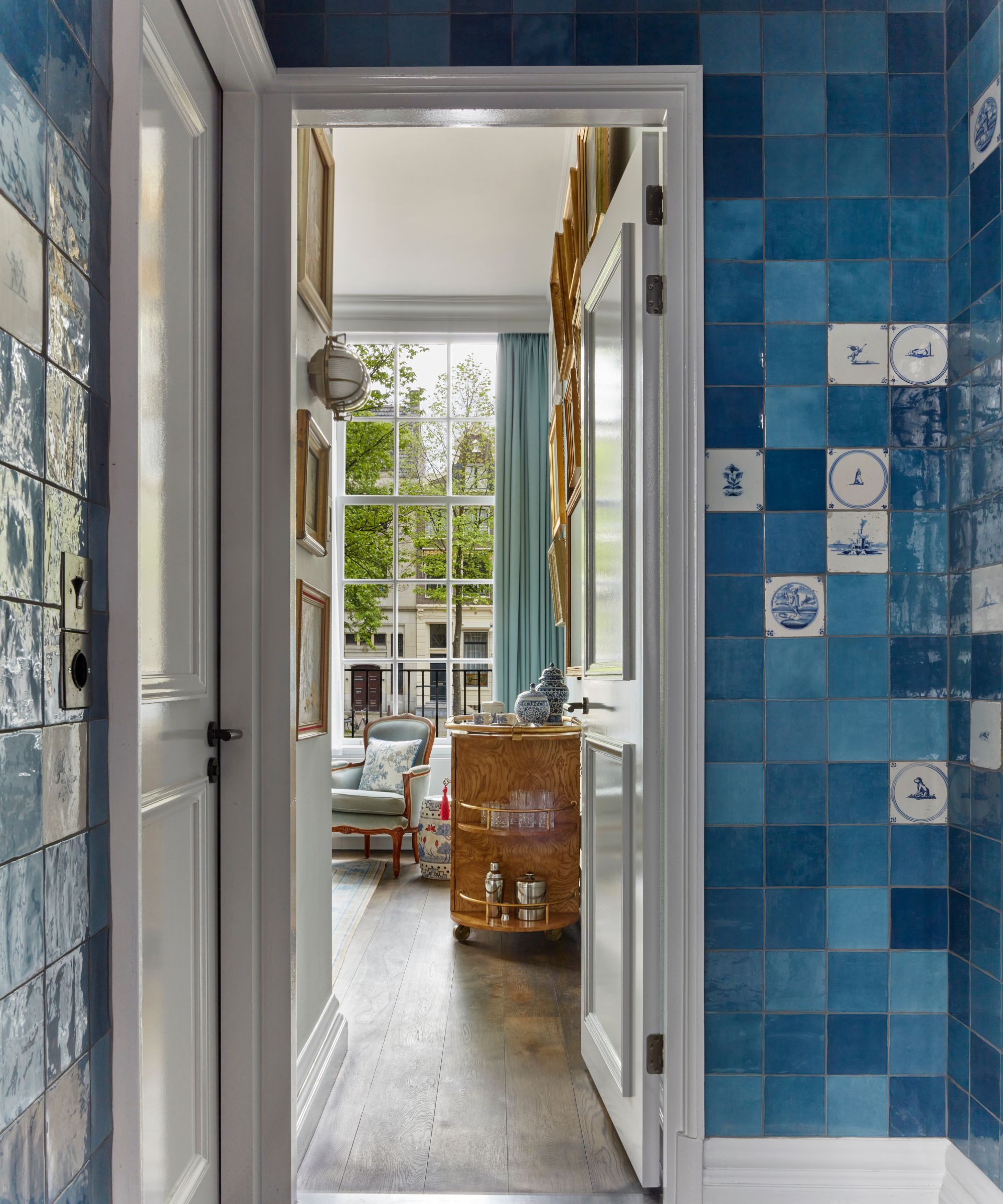
The most memorable hotels offer an element of surprise. Whether it’s an eye-catching piece of art, an unexpected color combination, or a playful detail that makes you pause and take notice, it is these moments that help to set each space apart.
Creating personality was something Jacu worked hard to achieve in Amsterdam. 'Every room in the Pulitzer has its own identity,' he explains. 'In the Flower Collector’s Suite, I introduced unexpected details such as the minibar which showcases metalwork inspired by the greenhouses at the Dutch botanical gardens, and exclusive hand-pressed floral tiles [seen above] in the room which have been created by an artisan in France – and each one of the 60 is unique.'
'Hotels should offer more than just a place to sleep; they should create an experience, a sense of curiosity and delight,' he adds. A sentiment that easily be translated into your own luxury hotel style bedroom with a unique vintage find, playful light, or perhaps a pop of an unexpected color in an otherwise neutral palette al la the unexpected red theory.
4. Play with pattern scaling
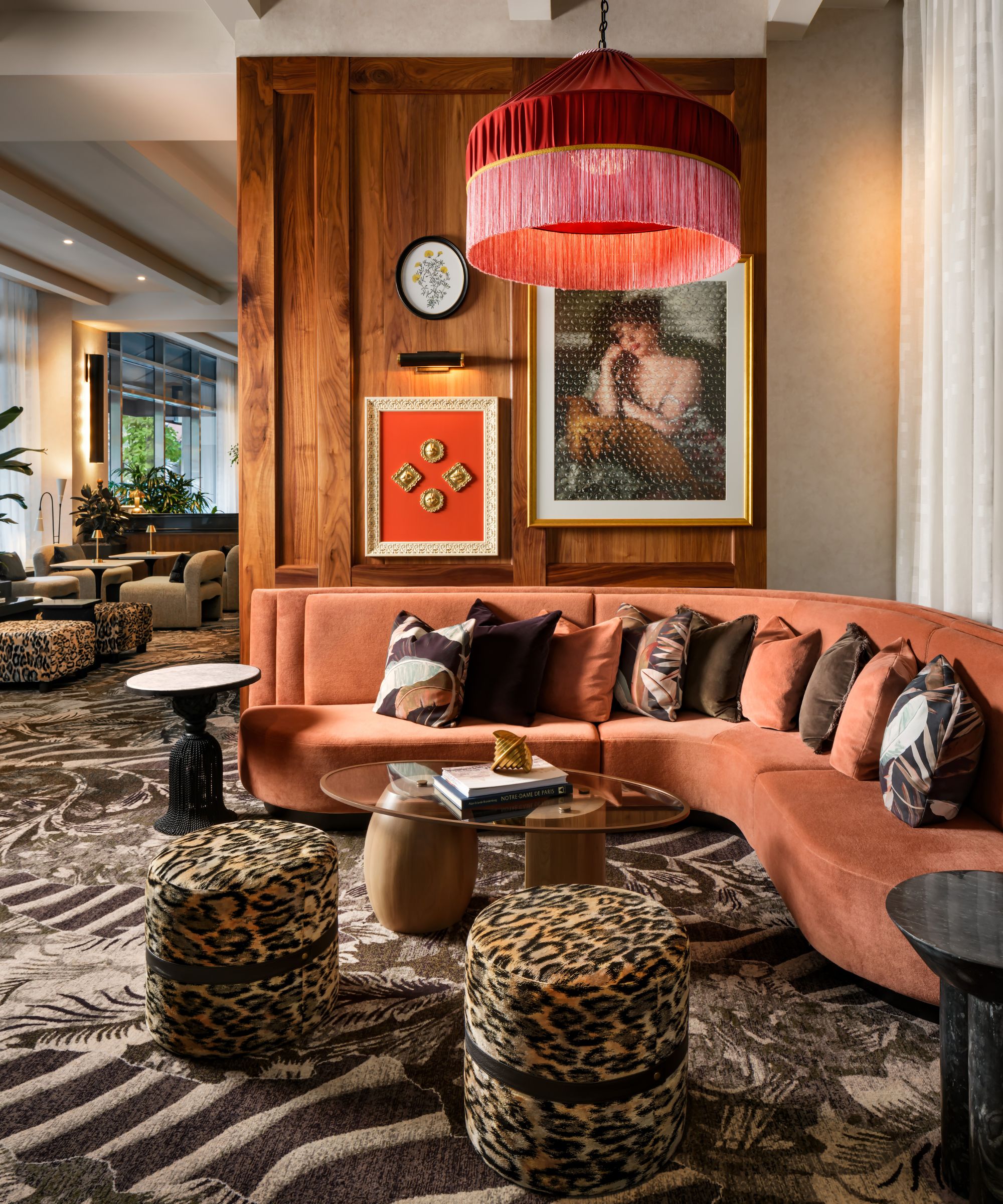
One key element I find that designers nail in hotel design is mixing patterns in a room. As it turns out, the secret to making it work, especially in a home setting, is playing with scale, says Molly Forman senior associate at //3877 Design.
'Large scale and small scale, floral and geometric pattern use is really prominent in hotel design,' she says. 'It helps soften spaces, give them character, and ground guests in their location – and the same can be said for homes.'
A single scale throughout, such as all ditsy florals, can feel overwhelming or flat, but mixing patterns brings depth and sophistication. It just takes a keen eye to find the right pairings. People are often afraid to mix and match, but when done right, it creates a space that feels layered and intentional. Say, for example, you have a big floral print on a sofa look to balance it with a pinstripe on a throw pillow or rug.
'Using and mixing patterns provides an element of sophistication and self-expression. Our team’s work on Hotel Tonnelle in New Orleans and Sofitel Philadelphia at Rittenhouse Square [seen above] execute this concept really well, bringing a residential feel to the space.'
Designed to be piled high with a mismatch of floral pillows, the Maddie pillow from Pottery Barn is covered in embroidered flowers on a pure linen background to bring color, pattern, and texture to your space.
Animal print simply makes everything look cooler. This velvet tiger-style striped pillow from Amazon is not only budget-friendly but made from high-quality velvet that's soft to the touch and features an invisible zipper.
Balance out the louder prints with something more subtle, like this pillow from Threshold™ Design with Studio McGee. The neutral cover is surrounded by a striped ruffle trim that brings a hint of print to your pillowscaping.
5. Work with what you've got
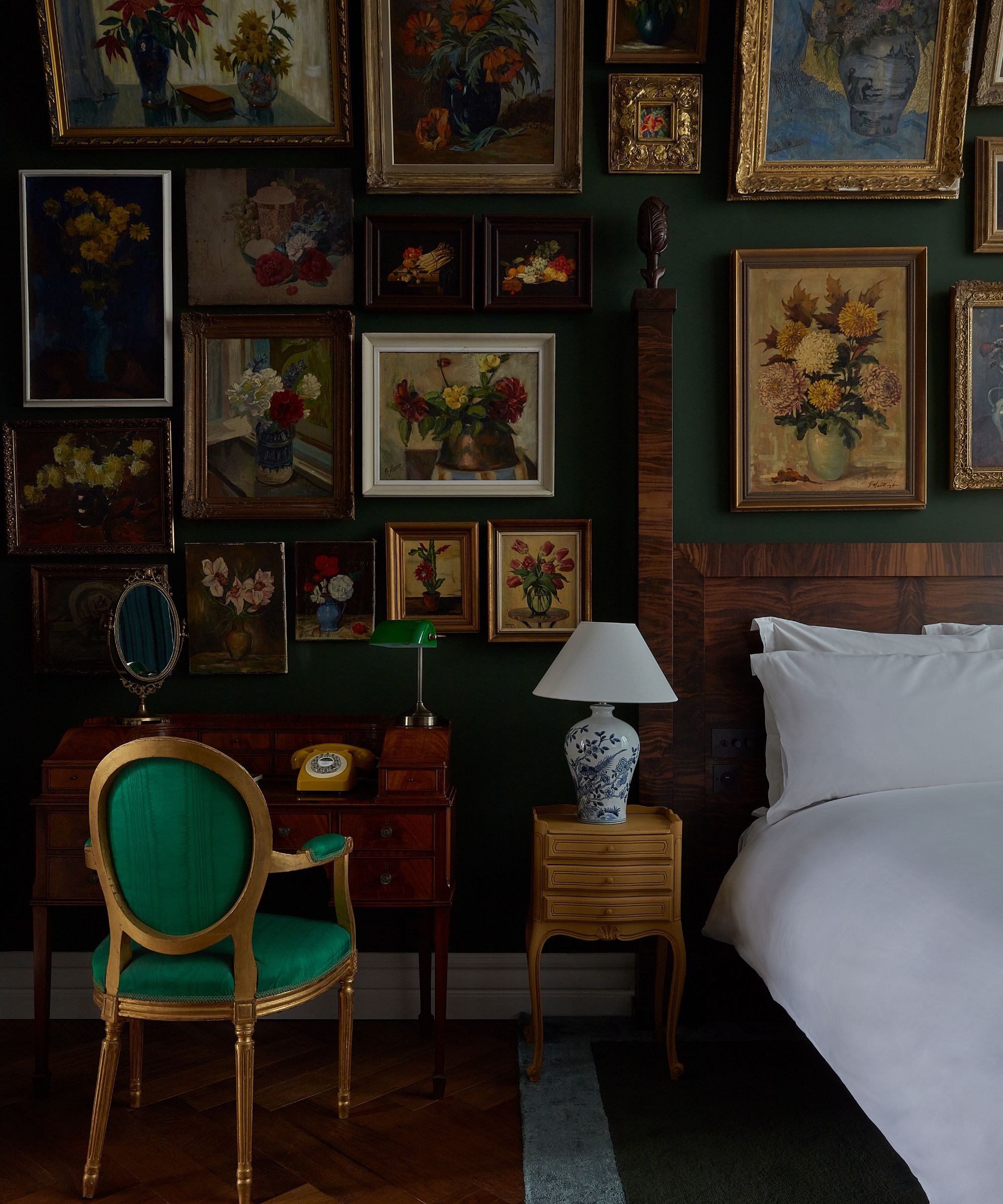
The best-designed hotels don’t try to fight their architectural quirks – they embrace it. That might be beautiful original molding, low ceilings, or an awkward nook – designers will find a way to highlight these to create something unique that gives the entire space a sense of history or personality.
'The hotel is set within a UNESCO World Heritage building which gives it undeniable character – exposed wooden beams, crooked walls, layers of history,' Jacu continues. 'Instead of covering these details up, I wanted to celebrate them. The design plays with contrasts: antique pieces sit beside modern furnishings, rich, deep colors balance bright, airy spaces.'
'This mix allows the past and present to coexist harmoniously, making the hotel feel both timeless and contemporary. The result is a hotel where no two rooms are quite the same, yet every inch of the space feels undeniably connected by referencing Amsterdam’s rich history. For example, the Flower Collector’s suite [seen above] is an homage to the city’s longstanding history of flower trading. You can find a gallery hang of framed flower paintings which was inspired by an arrangement in the Royal Academy in the late Victorian era.'
6. Maximize space by putting things up and away
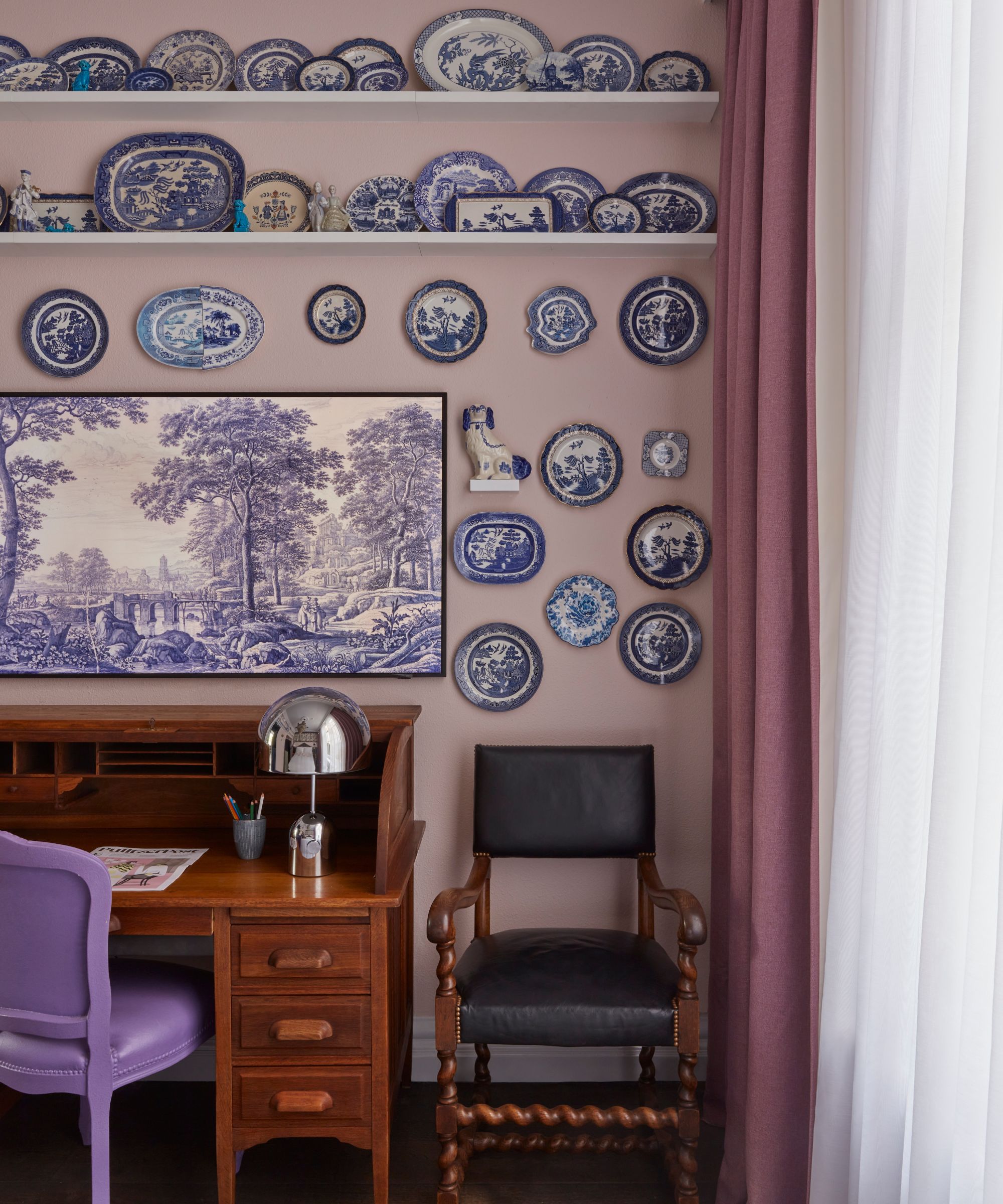
Walk into a well-designed hotel suite, and you’ll notice one thing: everything has its place, and nothing feels crowded. The secret? Smart storage ideas that keep surfaces clear and maximize vertical space.
'Maximizing efficiency is key in small rooms, but translates into the way people want to use their own spaces everywhere,' says Molly. 'Wall mounting televisions and other entertainment elements is something a lot of hotels do to make use of the surface below for storage or a desk. However, this is a great solution for homes as well, as it can open up that horizontal surface for other things (or nothing!).'
But these solutions don't need to be an eyesore. At home, try to think vertically to make the most of every inch. Wall-mounted shelves, floating nightstands, and floor-to-ceiling cabinetry can create storage without sacrificing square footage and can become a design feature itself.
7. Less is often more
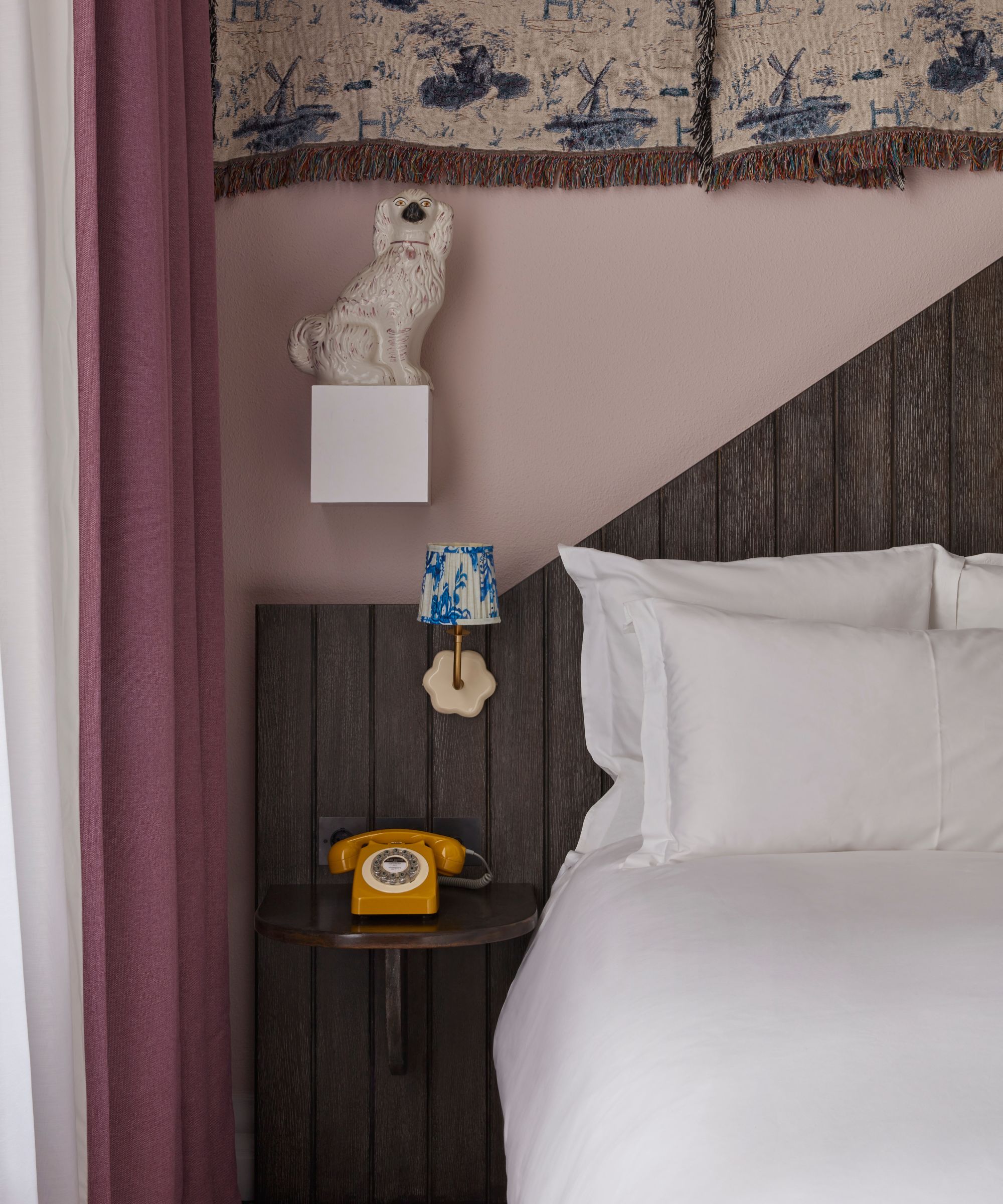
One of the biggest mistakes people make when trying to recreate a hotel-like feel at home is over-accessorizing. Step into a high-end hotel suite, and you’ll notice that the bed is often never overloaded with throw pillows or excessive blankets. Why? Because they just get in the way at the end of the day.
When it comes to throw pillows, take a less is more approach says Stephanie Sabbe. 'I like to leave the throw pillows in common spaces to the residential projects.' Stephanie says. 'Throw pillows are a personal item that should not be lounged upon by multiple people in a public setting. It's gross. Nothing screams "someone hired their decorator" in a hotel like a karate-chopped throw pillow.'
Too many throw pillows can make a bed or sofa look cluttered rather than inviting, while excessive layers can feel fussy instead of refined. A feeling that doesn't exactly inspire relaxation.
For her final tip? Stephanie reminds you to think practically. 'Do not only consider the end user when designing. Sometimes everyday habits like cleaning or maintaining can be the most abusive to the interior.'
Whether it’s a few subtle tweaks or a full refresh, if you're looking to create some hotel magic at home, hopefully, these tips will inspire but if you're looking for more check out our piece on hotel bathroom ideas to take from luxury hotels.







